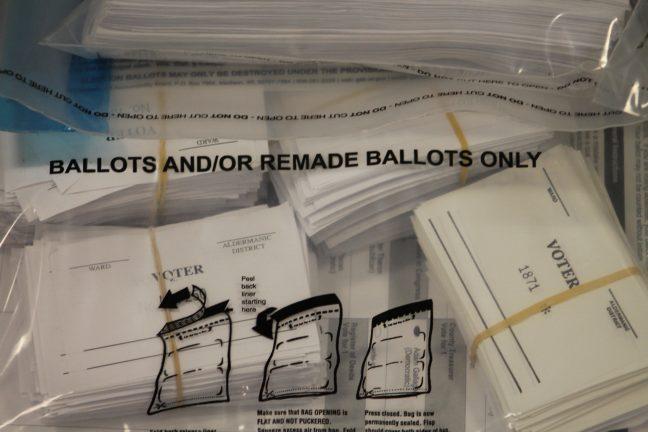With approximately 70 percent of the 2.97 million votes cast in Wisconsin recounted, the Wisconsin Elections Commission reported the Hillary Clinton campaign has received 82 more additional votes than President-elect Donald Trump, not near the original 22,177 vote gap.
Though 34 counties have completed their recount, Dane County — one of the largest voting counties in the state — has not yet reported its results. The local canvassing committee elected to hand-count the ballots despite a Nov. 29 court ruling that counties could electronically or hand count ballots.
Of Wisconsin’s counties, 47 chose to recount by hand, 12 chose to use optical scanners and the remaining 13 chose to use a combination. Experts testified that neither method would take significantly longer than the other, though the judge encouraged counties to hand count in the interest of accuracy.
The City of Milwaukee is not part of the commission’s running tally because they count their absentee ballots in a central location, meaning the results from each ward do not include the absentee ballots.
“If you use just those partial figures … you can’t compare the final number to the partially recounted number,” said Reid Magney, WEC spokesperson.
Based on currently available analysis, the commission reported Trump gained 410 votes, Clinton gained 492 votes, Constitution Party candidate Darrell Castle gained 12, Libertarian Party candidate Gary Johnson gained 46, Green Party candidate Jill Stein gained 60, Workers World Party candidate Monica Moorehead gained nine and Reform Party candidate Rocky De la Fuente gained seven.
Magney said the rise in the number of ballots counted depends on the type of machine used. Approximately 309 absentee ballots were undercounted in Marinette County because voters used non-standard ink pens and poll workers didn’t recognize the problem, according to the statement. Of these ballots, 118 went to Trump and 166 went to Clinton.
Issues like this can depend on what type of equipment is used, Magney said. He said some older optical scanners only detect pencil or special ink markings. This becomes a problem when people use regular ink pens or don’t correctly fill in the oval next to the candidate they choose.
“Those things are picked up during the recount because somebody looks at every ballot,” Magney said.
The commission has seen multiple “fake news” stories since the recount began Dec. 2, Magney said. The proliferation of fake online stories that include misleading or incomplete information is an issue that has come to national attention following the November elections.
Magney corrected some misconceptions, confirming: votes for Trump were not being counted twice in Waukesha County; ballots were being scanned properly and were available for viewing by campaign representatives; and warranty seal issues on some voting machines in St. Croix County were the result of technical maintenance.
Vote recounts are open both to campaign representatives and the public, though they are not permitted to touch the ballots. Some observers raised questions about the security of voting equipment in St. Croix County, though WEC has since stated it is “confident that this is not an issue that would have affected the accuracy of the results reported by the equipment.”
Thomas Muske is a senior field service technician for Election Systems & Software LCC who serviced modems in the scanners that were used to transmit unofficial results on election night.
He has since signed a sworn affidavit stating he serviced a DS200 ballot scanner to fix an issue with the modem before the election and fixed a misaligned lock Nov. 16 but did not have replacement warranty labels with him at the time.
Muske added it is “typical and customary” to break the warranty labels to fix the machines. The warranty labels are different from state-required “security seals” and are used only for the companies.
This is just one of the fake news stories appearing on social media over the past week, Magney said.
“I think the genesis of a lot of it is people who go to the recounts as observers and don’t understand exactly what they’re seeing,” Magney said.
He said citizens can make assumptions based on these observations then share them on social media, which fake news websites can pick up and run with.
Magney said though he is not a statistician, they believe the initial vote margin will not change significantly. Despite these issues with false reporting, the recount is still on track to meet the 8 p.m. Dec. 12 deadline.
“The counties are assuring us that they will be done by then,” Magney said.


